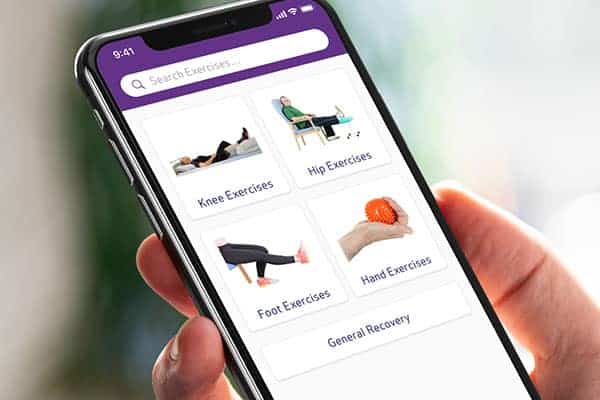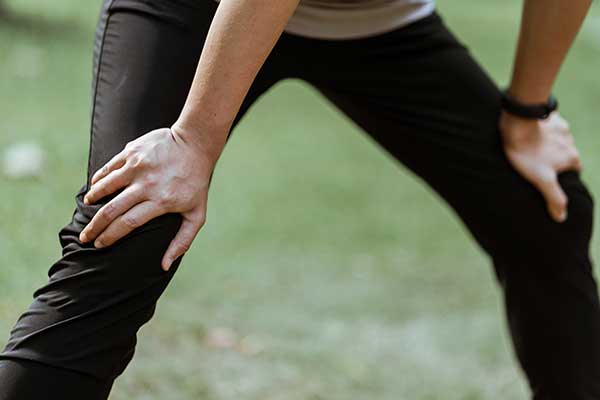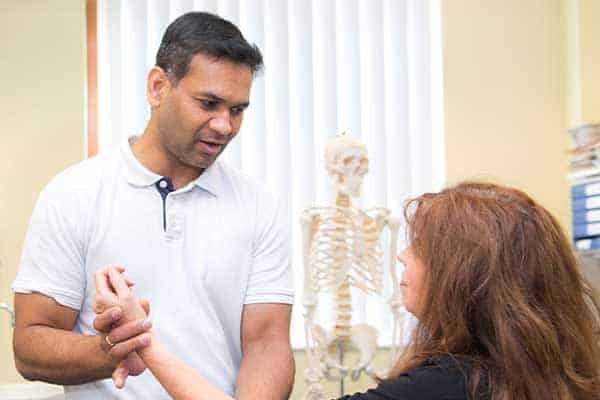Iliotibial band syndrome (ITB syndrome) causes pain on the outside of your knee when you are exercising. It can also cause referred lateral hip pain.
It is very common among runners.
What causes iliotibial band syndrome?
The iliotibial band is a layer of strong fibres that run from your pelvis down the outside of your thigh into the outer part of your knee. It helps to keep your knee and hip stable when you exercise.
The structures underneath this band can become compressed when the knee bends and straightens. This is perfectly normal, but if you suddenly change the amount or type of exercise that you are doing, the extra compression can cause sensitivity and pain.
What are the symptoms of iliotibial band syndrome?
The pain associated with iliotibial band syndrome often starts when you increase your exercise programme, such as when training for an event.
In most cases:
- You feel sharp pain or tightness on the outside of your knee.
- You may also experience tenderness on the outside of your knee.
- The pain is linked to running, often occurring at the same distance each time.
- You may find that going downhill or downstairs becomes painful.
How is iliotibial band syndrome diagnosed?
Your GP or physiotherapist can usually diagnose iliotibial band syndrome based on your symptoms, a discussion of your exercise routine and a physical examination.
What are the treatment options for iliotibial band syndrome?
It is important to manage pain during the first few days, so it is advisable to reduce the amount of activity you do and to avoid running if it is painful.
It is not advisable to stop all activity. Your iliotibial band is very strong and you are unlikely to damage it or the structures beneath it by continuing some form of exercise. However, do avoid compressing the painful area with massage or foam rollers.
You might need to modify your training for up to six weeks to avoid making the pain worse. Try different activities such as swimming, yoga or walking.
You can start immediately with exercises to maintain and build up the strength of the muscle groups in your knee and hip. Just avoid anything that makes the pain get worse.
When resting, put an ice pack on the outer knee for 10-20 minutes, every 2-3 hours, to relieve pain. (Do not put ice directly next to skin as it may cause ice burn. Wrap it in a damp tea towel. Remove the pack if irritation increases. Allow the area to return to normal temperature before reapplying the ice.)
You could try anti-inflammatory painkillers such as Ibuprofen. Some anti-inflammatory painkillers also come as creams or gels, which you can rub over your knee area. These tend to produce fewer side effects than those taken by mouth. If you cannot take anti-inflammatory painkillers, other painkillers such as paracetamol, with or without codeine added, may be helpful. Ask your doctor or pharmacist for advice.
As the pain improves, gradually build up your running, cycling or other higher intensity activities. Begin with shorter sprints or fewer repetitions to lessen the irritation. Avoid running on hard surfaces or downhill.
What is the prognosis (outlook) for iliotibial band syndrome?
In most cases, iliotibial band syndrome should ease by itself if you do not overdo your recovery exercises or return to running too early.
Generally, around half of all people with iliotibial band syndrome find they can return to their fully active routine within two months. Others may take longer to recover fully.
If your symptoms worsen or have not improved after three months, speak to your GP.
How can I prevent recurrence of iliotibial band syndrome?
There may be changes you can make to your normal routine and lifestyle that will make another episode of iliotibial band syndrome less likely.
You could look at the amount of running or related activity that you do and factor in more recovery time. If you introduced hill running or running on banked ground before the pain developed, consider avoiding these activities in the future.
Check your technique and your footwear to see if they can be improved. Warm up before and stretch after exercise, and if possible exercise on softer ground.

Pocket Physio | Download now
Search for ‘Pocket Physio’ on the Apple App Store for iOS and the Google Play Store for Android to download for free.




